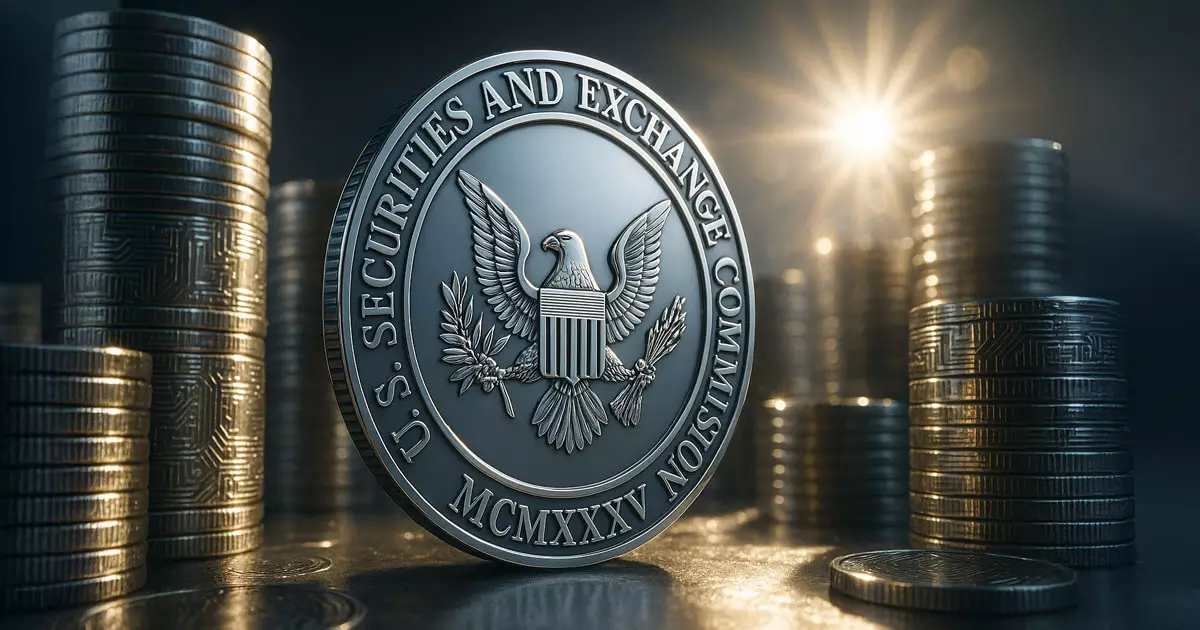In a world where investment landscapes are continuously evolving, the recent regulatory clarity surrounding staking within exchange-traded funds (ETFs) has opened up a plethora of opportunities for investors. The U.S. Securities and Exchange Commission (SEC) recently established that staking rewards do not amount to a securities sale, provided that the customer retains ownership of their assets, effectively leveling the playing field for various types of staking mechanisms. This landmark decision serves as a profound endorsement of staking, further encouraging its adoption by financial entities, which could ultimately lead to a watershed moment for how we perceive investment in crypto assets.
The bipartisan Digital Asset Market Clarity Act, or the CLARITY Act, complements this shift by redistributing the oversight of secondary market token trading to the Commodity Futures Trading Commission (CFTC). This bifurcation of regulatory authority alleviates fears that have long haunted potential investors and issuers alike. Wouldn’t it be refreshing to see the once murky waters of cryptocurrency trading cleared up for the benefit of all? What remains to be seen is how swiftly and effectively this new framework will be implemented, and which major financial players will seize these opportunities first.
Who Stands to Gain?
As more regulatory clarity emerges, key players such as BlackRock, Fidelity, and Bitwise are poised to capitalize on these advancements by creating products that encapsulate staking rewards within an ETF structure. The report from Nansen underlines that the most attractive staking assets, including Ethereum (ETH), Solana (SOL), and Binance Coin (BNB), could see newfound interest among investors drawn to the steady yields available from staking. The anticipated yields on these assets can range substantially—from ETH’s average of approximately 2.5% to 3% to SOL’s commendably higher range of 6.5% to 8%.
Contrast this with traditional equities where yields are often tied to fluctuating corporate earnings, and it becomes evident that staking offers a different paradigm of risk versus reward. The question then becomes, why wouldn’t investors take a closer look at these staking-enabled ETFs as viable alternatives to more conventional investments?
Market Sentiment and Scenarios
However, all is not crystal clear. The report also outlines a range of macroeconomic scenarios tied to U.S.-China trade discussions that could impact these staking ETFs. In a “muddle-through” scenario, where negotiations persist without resolution, we might see Bitcoin retest its all-time highs. Conversely, a re-escalation in tariffs could send equities spiraling downwards, with staking tokens appearing as a beacon for cautious investors seeking refuge. This divergence in potential market outcomes emphasizes the necessity for strategic investment choices.
While some skeptics might cling to the bearish outlook, the fundamental attraction of staking-enabled ETFs may continue to outshine conventional stocks. The capacity of staking assets to offer yield amidst market turmoil could deliver a unique sanctuary for opportunistic investors, particularly as the equity risk premium appears to dwindle below 2.5%.
A Shift in Investor Mindset
For many investors, the historical volatility of crypto assets feels intimidating. Yet, the emergence of staking-enabled ETFs signifies a pivotal shift. Investors can now engage with blockchain technology’s potential in a more structured manner—the ability to earn yields that do not hinge on the financial health of a company could fundamentally alter investment strategies.
This new trajectory bolsters the argument for diversified investment portfolios, where the alluring ‘crypto upside’ can coexist with a stream of yield akin to fixed income investments. The potential for earning while retaining ownership could not only pique the interest of seasoned investors but also attract those hesitant to delve into crypto due to its notorious volatility.
In an era marked by uncertainty, the importance of regulatory clarity and innovative financial products cannot be overstated. Staking-enabled ETFs represent more than just a passing trend; they might well be the future of investment strategy in a digital age. As the gap between traditional finance and cryptocurrency narrows, investors would be wise to keep an eye on this developing landscape.


Leave a Reply